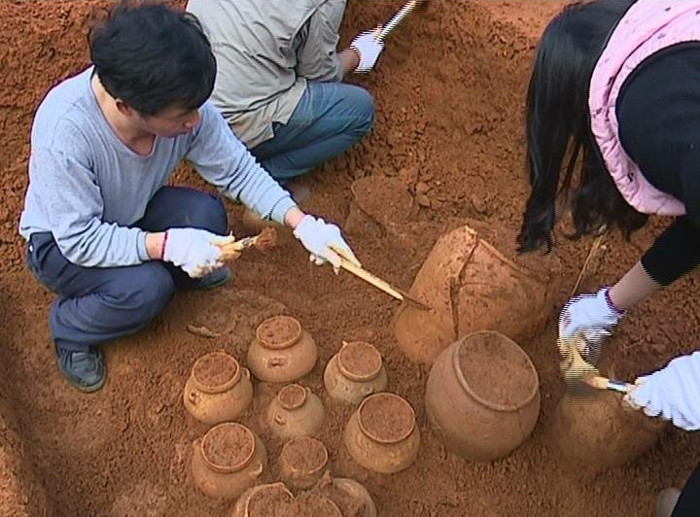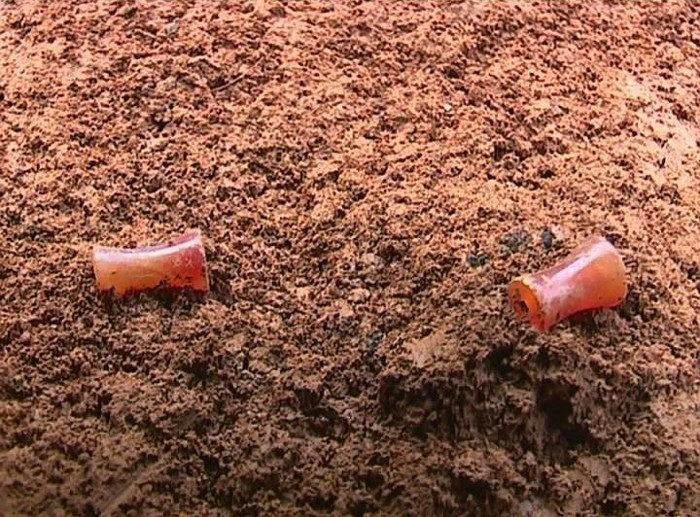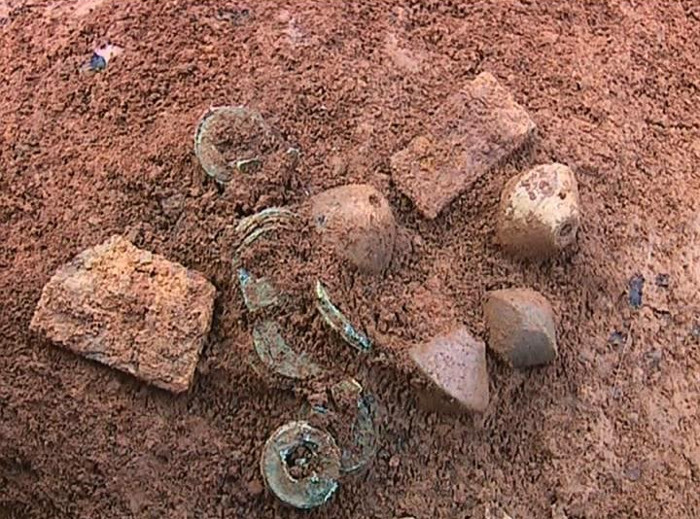Ancient tomb 2,000 years next to the silk road on the sea
People in Guangxi, China discovered an ancient tomb at the end of the Eastern Han Dynasty (25 TCN-220), located near the river used to be a Chinese feudal sea silk route.

According to China News, people in Zhongshan District, Xiazhou City, Guangxi Province, China, while digging their foundations for houses, discovered an ancient tomb at the end of the Eastern Han Dynasty with a history of up to 2,000 years.

The excavation team has dug many antiques such as pottery cauldron, ceramic vases, copper bowls, copper coins and copper mirrors.In the style, type and quantity of antiques, the identity of the grave owner may belong to the upper class in ancient Chinese society.

The archaeological team also discovered ear rings, silk wheels, copper mirrors, indicating that the grave owner might be female.In addition, the size of the reel is found in a fairly large grave, the largest type of reel in local history.

The location of the tomb is located in the Tu Can river basin.In the Han Dynasty, this river was named Fuzhou, the only waterway between the Chuan River and the Ly River in the ancient Hazhou Road in history.Tu Can is now a branch of the Ly River, now called Que Giang River, flowing through the northeastern area of the Choang Autonomous Region, Guangxi Province.

In ancient times, merchant ships traveled from the Que Giang River to the Tay Giang River, or through the Leizhou Peninsula to Hop Pho and into the Gulf of Tonkin, to South Asian countries.

Archaeologists say that the Tu Can River is an important part of the maritime Silk Road , which also connects the Central Highlands culture and Lingnan culture.

The discovery of the grave provided additional grounds for studying China's Xiaoguan ancient road and China's maritime Silk Road.Besides, it also has important reference value for studying the distribution, direction and situation of socio-economic development along the ancient road of Xia Ha, as well as burial practices at that time.
- Legend of the famous 'Silk Road' in history
- Discovered an ancient road of thousands of years in Lac Duong
- Why is the ancient castle of Lan Lan missing?
- China revived the 12,000km Silk Road to England
- Thousand-year sphinx statue in the tomb of Tang Dynasty
- Evidence of Chinese silk production from 8500 years ago
- The ancient tomb on Buoi Street is over 1,000 years old?
- The secret of an ancient tomb is 800 years old in China
- Found many relics on the Silk Road
- The mystery of the 'invisible' prince before the thief for 1400 years
- Identify the Egyptian pharaoh in the ancient tomb
- Discover the oldest tomb of the Maya period
 Discovered an ancient centipede fossil 99 million years old
Discovered an ancient centipede fossil 99 million years old Discovered bat-like dinosaurs in China
Discovered bat-like dinosaurs in China Discovered a 200-year-old bronze cannon of the coast
Discovered a 200-year-old bronze cannon of the coast Discover 305 million-year-old spider fossils
Discover 305 million-year-old spider fossils